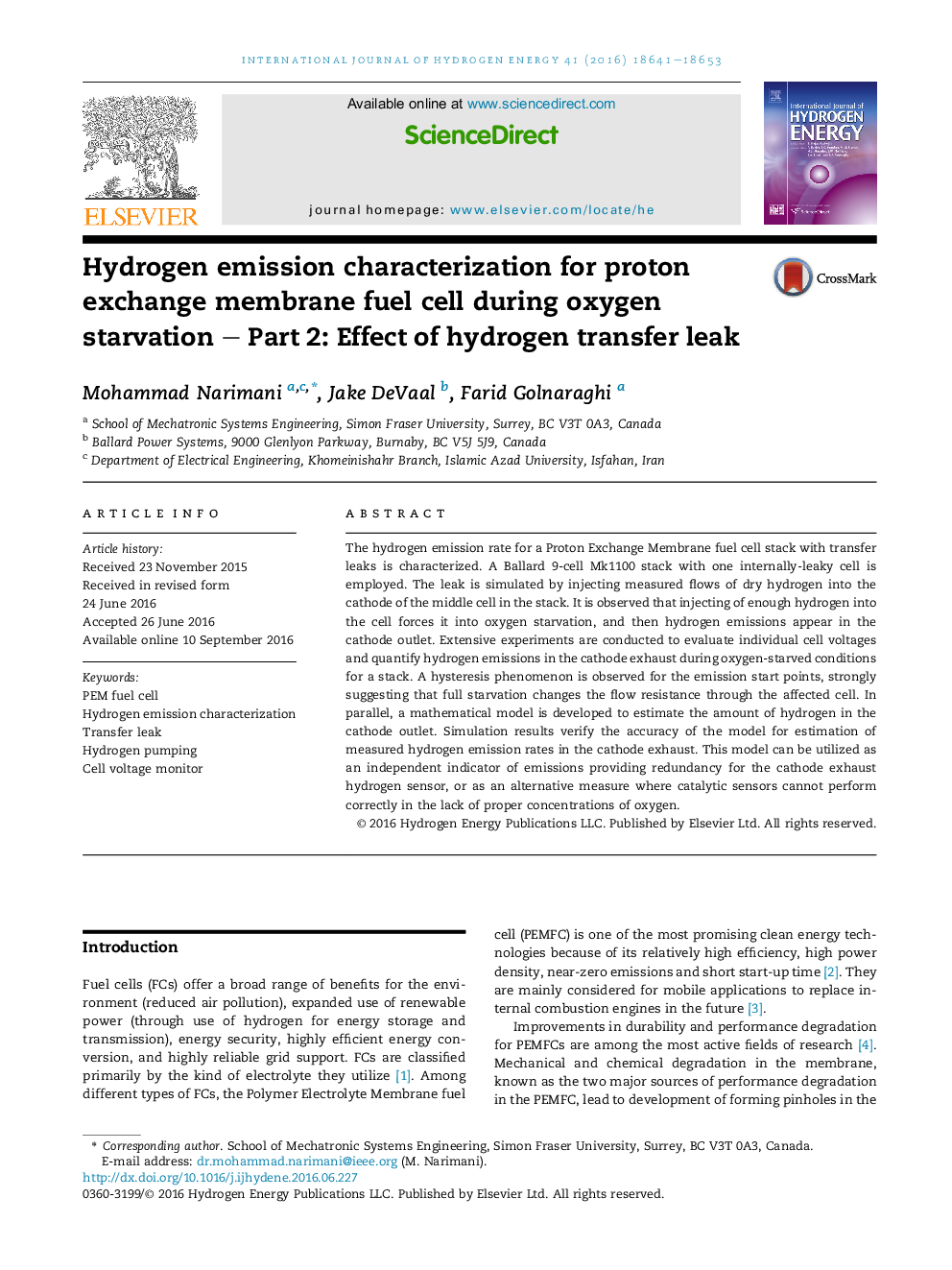| Article ID | Journal | Published Year | Pages | File Type |
|---|---|---|---|---|
| 5147413 | International Journal of Hydrogen Energy | 2016 | 13 Pages |
Abstract
The hydrogen emission rate for a Proton Exchange Membrane fuel cell stack with transfer leaks is characterized. A Ballard 9-cell Mk1100 stack with one internally-leaky cell is employed. The leak is simulated by injecting measured flows of dry hydrogen into the cathode of the middle cell in the stack. It is observed that injecting of enough hydrogen into the cell forces it into oxygen starvation, and then hydrogen emissions appear in the cathode outlet. Extensive experiments are conducted to evaluate individual cell voltages and quantify hydrogen emissions in the cathode exhaust during oxygen-starved conditions for a stack. A hysteresis phenomenon is observed for the emission start points, strongly suggesting that full starvation changes the flow resistance through the affected cell. In parallel, a mathematical model is developed to estimate the amount of hydrogen in the cathode outlet. Simulation results verify the accuracy of the model for estimation of measured hydrogen emission rates in the cathode exhaust. This model can be utilized as an independent indicator of emissions providing redundancy for the cathode exhaust hydrogen sensor, or as an alternative measure where catalytic sensors cannot perform correctly in the lack of proper concentrations of oxygen.
Keywords
Related Topics
Physical Sciences and Engineering
Chemistry
Electrochemistry
Authors
Mohammad Narimani, Jake DeVaal, Farid Golnaraghi,
